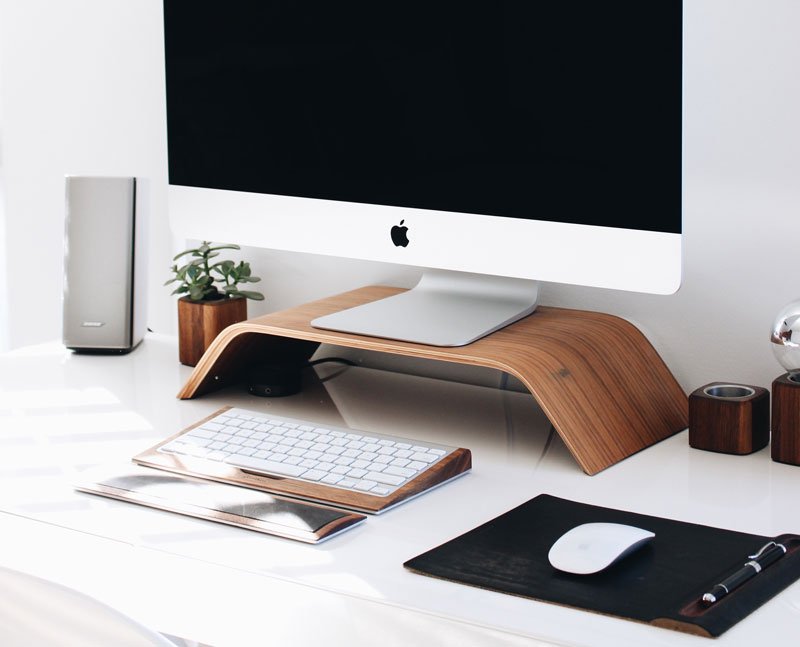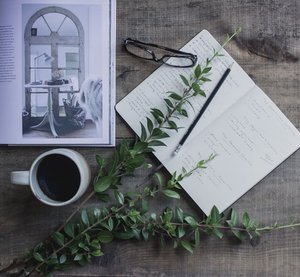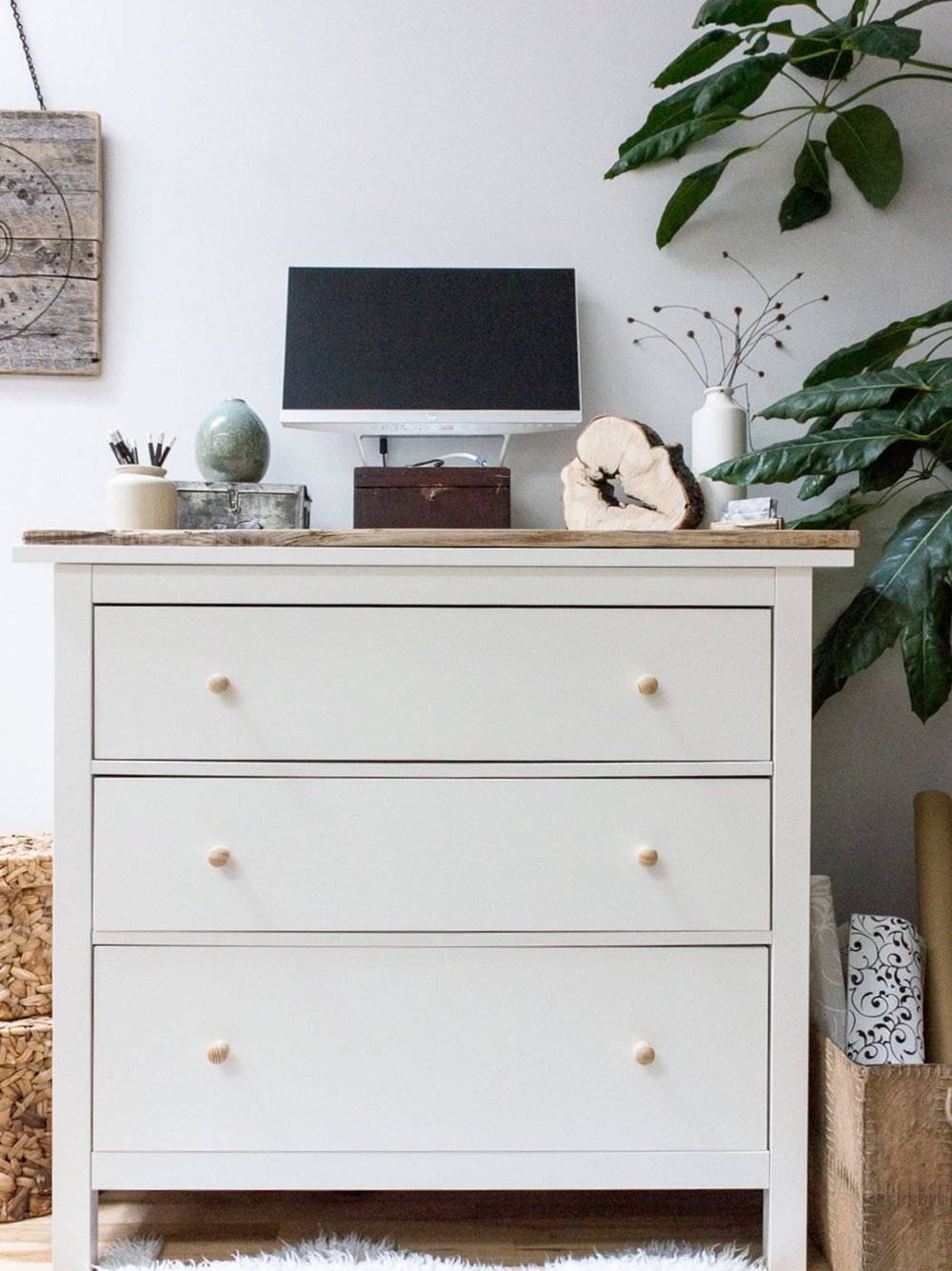How To Design A Productive Workspace
I was asked today what I have in my home office that keeps me inspired and productive. It's a great question, because since moving into my new apartment four months ago I've physically moved my workspace around at least five times. For me, it has to feel right, be comfortable and functional, and only after those things are accomplished, be beautiful. It can take time spent up front to try out different layouts and systems to make sure it fits my needs, but it's so very worth it.
Research tells us that our environments play a huge role in how engaged, productive, happy, and healthy we are. When we design our workspace for optimal energy flow, lighting, comfort and functionality our wellbeing, creativity and productivity will increase.
Here's what I suggest are MUST HAVE'S for a workspace that provides enjoyment, inspiration, energy and ease (and it's what I follow for my own home office and studio):
1. Lots of light
There's nothing that affects our energy levels more than sunlight. Numerous studies have shown a dramatic difference in worker happiness, stress levels and productivity when in an environment with ample natural light. Daylight provides the mental and visual stimulation necessary to regulate our circadian rhythms, which determine the release of cortisol into our bodies. With less access to daylight we become more stressed, experience poorer sleep, and have less ability to stabilize our energy levels.
Try to move your desk to a spot with the most natural daylight as possible. K
eep windows clean and free from dark curtains and blinds.
And if that's not enough, add a table or floor lamp with a white daylight LED bulb.
Also consider painting your workspace white or offwhite - it will bounce around the light and help maintain positive energy flow.
2. Natural elements
Feng Shui philosophy states that we live life through our senses, and if we are too caught up in mental activities such as working on our computers, texting, attending meetings, watching screens, and worrying, we need to ground ourselves again so that we can be present in our sensory world. Our homes and offices can work to ground us with a few simple hacks.
1. Eliminate all electricity running into your space that is not necessary. That means plug all computers, TVs and phones into a power bar and turn it off when not in use.
2. Introduce plants to your office space to absorb excess electrical energy, freshen the air, and connect you with nature. A plant on your desk can lower stress by as much as 12%.
3. Introduce other earth elements like rocks, shells or wood and keep them where you can touch them - perhaps in a bowl on your desk. Seeing and touching these natural items will help ground you and take you out of your own head.
3. Comfort
I have a big comfy chair in the corner of my office so that I can take breaks to sit here and do some deep breathing or listen to a podcast. We live a good chunck of our weeks in our workspaces so they need to be comfortable and relaxed.
Invest in an ergonomic chair and keep a throw and/or pillow on it so you can stay warm and cozy.
Add a plush throw rug underfoot.
Keep a favourite pair of chunky knit socks handy so you can kick off your shoes and feel like you're at home.
Keep the temperature warm: optimal room temperature for productivity is 25 degrees Celcius or 77 degrees Fahrenheit. It allows you to stay more focused and energized because your body isn't spending energy to warm up. Studies have shown that workers make 44% more mistakes in cold temps than at optimal room temperature. If you can't control the heat in your office, bring in a small portable space heater.
4. Ease of function
If I have to search for notebooks or climb over a piece of furniture to get my camera when I need it, I'm going to be frustrated. And that blocks creativity and getting things done. So I need to make sure my space is set up to flow easily and keep everything I need organized and reachable.
Place your desk first, and then find ways to keep everything you need close by. Your desk should face either the door or window; never sit with your back to the door as it's subconciously unsettling and puts you in a place of submission instead of power.
Think about using dressers, lockers, open shelving or file cabinets to keep the tools that you need handy but organized. Use dividers or trays inside drawers to keep like items grouped together neatly.
Keep your phone, pencils, and utility items you need to grab quickly on your dominant hand side.
Invest in multiple sets of cords for laptops and monitors if you move around from place to place to work - it will be so much easier to hop back and forth if the cords are already plugged in and in place.
5. Healthy choices
I can easily become absorbed in writing or creating design boards and end up sitting in the same position all day long. So I set up my home office to jump from a sitting desk to a standing desk. I simply use a dresser, got a second monitor, and can now move my laptop from desk to desk every hour when my phone alarm beeps (see the DIY post).
Make sure to have healthy snacks on hand in a bowl on your desk.
Keep a large water bottle handy to encourage drinking lots of water throughout the day.
Use essential oils to clean the air and purify it for better concentration. Peppermint, lemon, cinnamon and rosemary all do this well, and can be used in a diffuser.
6. Inspiration
I think a workspace needs to be beautiful and reflect you and the things that inspire you. Mine includes old barn boards in the desk that my Dad and I made, and on top of the IKEA locker I use for storage. The old wood has such a rich and beautiful texture, and reminds me of family. I also love flowers, and usually have some around, along with collections of little things I love, like rope and twine.
A moodboard is also a great idea for inspiration in an office. Glue corkboard inside on old picture frame without the glass, paint it white, and then add photos, clippings, quotes, fabrics, and artwork that make you smile.
And here's what NOT to have your office, if you can remove or eliminate them:
1. Clutter
The state of your desk is the state of your mind. Period.
Whether you believe it or not, tons of research proves this is true, even if only on a subconscious level. Clutter overloads and stresses our senses, impairing our ability to think clearly and creatively.
Clean off your desk and keep things in their proper place.
Get to-do lists, spreadsheets and notes online in the cloud so they're available on all your devices when you need them.
Purge papers and keep only what's absolutely necessary, then file them away.
Keep one in-box for things you need to get to in a timely manner, and schedule time in your calendar to actually get to them.
Use little boxes, baskets and bowls on your surfaces to corral supplies like pens, paperclips and business cards.
Clear online clutter as well: limit newsfeeds, open tabs and notifications to only the essentials.
Unsubscribe from junk email (Unroll.me is a great tool), and keep your desktop and phone backgrounds simple and inspirational.
2. Noise
Constant noise and distractions can create stress without us even realizing it. I know I certainly need silence when writing, though I like some soft music when doing creative work like photography.
Turn off your phone and email ringers and sound notifications so you aren't constantly distracted.
Drown out noise from your officemates by wearing noise-blocking headphones.
Set up a classical or instrumental music playlist without lyrics on Spotify or Brain.fm to use while doing tasks that don't require heavy mental concentration.
If you work from home, make sure to carve out an office space that's quiet, away from others in the household. Post office hours or a Do Not Disturb sign on your door so that you won't be interrupted.
I realize that sometimes we can't control the noise and disruption of an office setting. In that case, make sure to schedule quick time-outs where you can retreat to a quiet area just for a minute or two to be silent, take some deep breaths, maybe walk in the fresh air, or even meditate.
The bottom line is that we spend a good chunk of our lives at work, so we should take the time necessary to set up our workspace so that it helps us thrive and deliver our best results. I eventually moved my home office into the smallest room in the house - but also the brightest with light coming in from two sides. It's cozy but fits everything I need, and I feel very "at home" in the space.






















